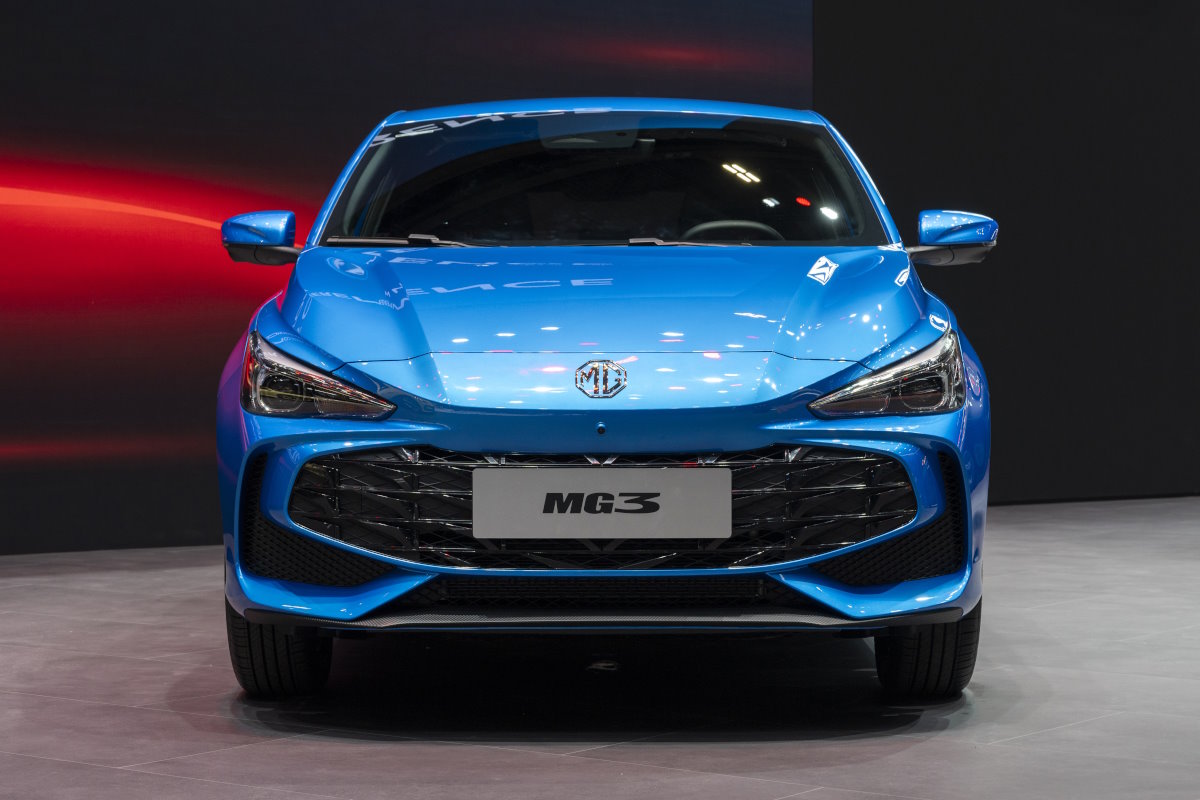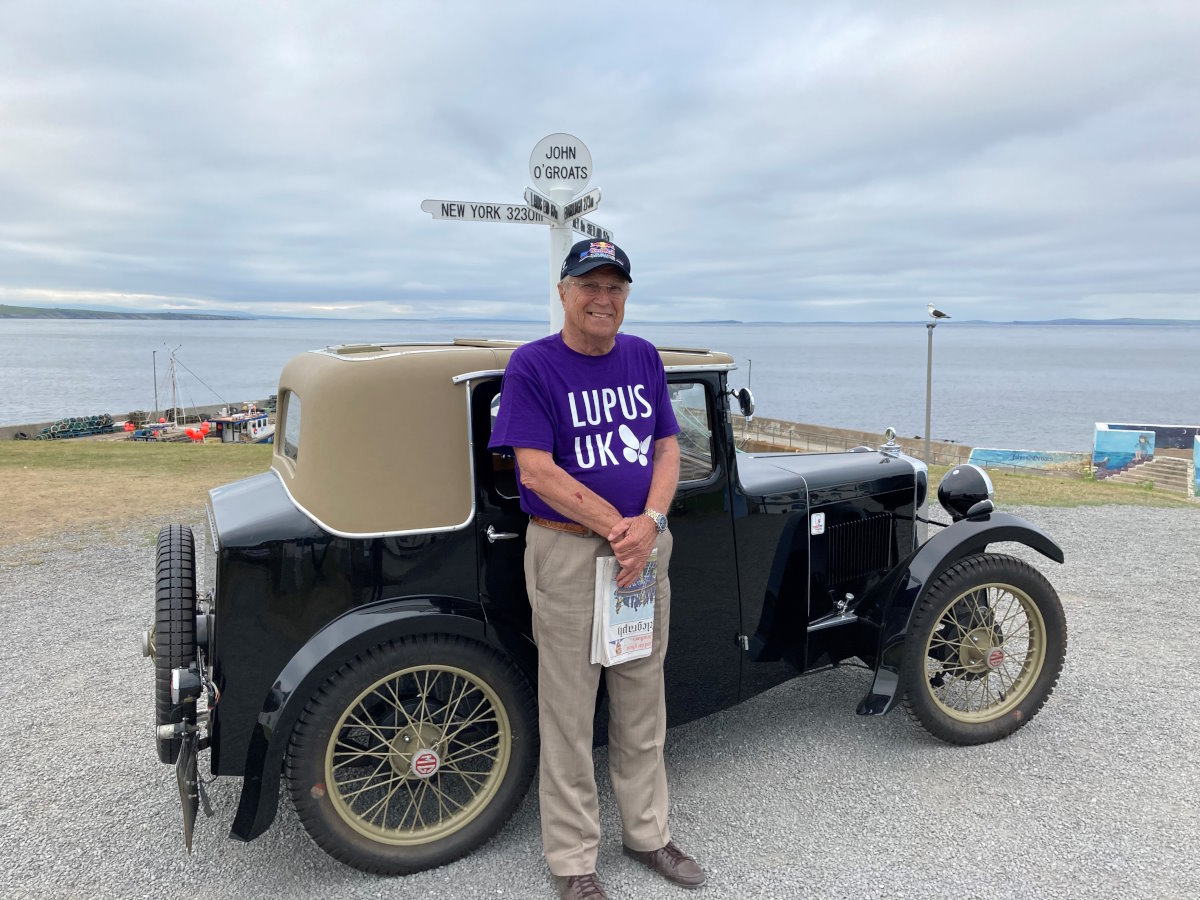Another Abingdon Aston
Reproduction in whole or in part of any article published on this website is prohibited without written permission of The MG Car Club.
When BL decided to close MG’s Abingdon home, many feared it would be the end of the marque. However there were plenty of options for MG’s future, including an intriguing offer from Aston Martin, an offer that produced one very unique MGB. An MGB that long-time fan Trevor Broadbent was keen to replicate…
In the week and months that followed the announcement that British Leyland intended to close the Abingdon works, MG fans waited with trepidation to see what the future held for their beloved marque.
Plenty of rumours circulated, but one in particular seemed to gain more momentum and in October 1979, Aston Martin announced plans to buy the MG name and the Abingdon works along with it, their intention being to produce almost 30,000 revised and modernised MGBs a year.
As history records, the staff at MG had fought hard to keep the B competitive. The engineers at Abingdon were keen to see the aging B-Series replaced by the newer, more efficient O-Series as it would keep the car relevant in key markets, such as the US where the car had dominated rivals from Triumph.
The development of the O-Series began to gather pace in the early 1970s when British Leyland deemed the B-Series in need of replacement, as much of the tooling used to produce it was nearing the end of its lifespan. The MGB’s continued success in the States, as well as BL’s hopes for the then-new Marina, meant that there was a justification in the finances for a new power unit.
The new engine proved to be significant improvement over the B-Series, with power output increased from 96bhp to 115bhp, something that would revive the MGB’s sporting prowess in America where ‘Federal Spec’ cars were developing as little as 45bhp by the end of the 1970s.
Despite development cars more than proving their worth, the purse strings at British Leyland were kept tied – the management saw little point in further developing the MGB when the company’s big hope for America, the Triumph TR7, was just about to hit the market.
So, ultimately BL called time on Abingdon, and car production was scheduled to end in 1980. Or was it?
By the tail end of 1979, Aston Martin had taken an MGB, fitted it with an O-Series and had completed a series of revisions, all with the intention of bringing the car in line with the tastes of the 1980s.
Negotiations continued and in 1980, Aston showed the car to the motoring press, intending to launch it in 1981. In March 1980, BL and Aston even went as far to announce a deal had been agreed, but Aston struggled to raise the £30 million asking price and BL began to lose patience with Aston, and despite not seeing a future in Abingdon, BL did see a future for MG – a fact borne out by the launch of the MG Metro in 1982.
The Aston B would become little more than a footnote in the long history of MG, but it would forever be the subject of interest for MG fans – particularly in 2011 when the car came up for sale.
While that car remains in the hands of a private collector, away from the MG owning community, one MG enthusiast has taken it upon himself to build his own.
Trevor Broadbent runs TJ Broadbent Engineering, near Bicester and has been a fan of all things MG for as long as he can recall. This car has been with him for over ten years.
“Originally it was a GT – a lorry had backed into it. It was going to be scrapped – the owner had lost heart” says Trevor.
The car could have been repaired, but as Trevor points out, it would have been expensive. “I cut GT bits off and put the roadster panels on – I’ve never seen the Aston car in the metal, so I’ve based everything I’ve done from photographs.”
Trevor worked his way around the car, getting the shell into a roadworthy condition before deseaming it and fabricating the black panels that run around the car’s bottom third. “I think the Aston car has a GT windscreen, as this one does – it gives a bit more height compared to the normal roadster screen,” notes Trevor. “From looking at the photos I think the black sections stand proud of the rest of the body, so I’ve replicated that. They give a nice continuous line around the bottom of the car from the front and rear bumpers.”
One of the most notable changes to the car is the front bumper, which successfully blends the classic chrome of the early Bs while meeting the draconian safety demands imposed by the US market. It’s a treatment that is reminiscent of the later Alfa Romeo Spider and shows how Aston’s revisions to the car were right on trend with the automotive fashions of the day. “I took a rubber bumper and cut the hoop section off and plastic fillered it” says Trevor, modestly.
At the rear, he’s followed the Aston car again, adding the additional lamps fitted to that car where the fuel filler once resided. “The extra lamps are from a Land Rover Freelander,” says Trevor. “I just removed the orange filter from it.”
One of the elements that made the Aston B appear more modern was the addition of fuel filler hidden behind a flap, rather than being exposed. Again, Trevor had to work from pictures of the car. “I went to a scrappy and found the closest match to the flap on the Aston car – I think it came from an Escort. I had to guess where it should go on the body!”
The B had originally been finished in Damask Red, but Trevor has resprayed the car Champagne gold, making it a closer match to the Aston, though he has stopped short of fitting the same white Wolfrace alloys, instead opting for more tasteful Minilite-style items.
Trevor then rewired the car before running it initially with the B Series, until he was able to eventually source the 2.0 litre O-Series the car is now equipped with. “The engine is from a Rover SD1 – I wanted an OS1 engine, so it would be correct. OS2 engines are easy to find, OS1s are a little more difficult.”
Despite the O-Series, Trevor has kept the original MGB gearbox. “I think the Aston car might have had a five-speed ‘box,” he says. “I was going to fit a Ford Type 9 ‘box, but to be honest the original ‘box is bulletproof.”
Trevor converted the backplate to allot the Rover’s engine to accept the MGB’s clutch and the car was complete.
“I’ve done it as a project over years, really,” says Trevor. “I’m pretty pleased with it now,” he adds.
Most recently, Trevor has completed the interior retrim, bringing to a close the lion’s share of the project, though he says the car still isn’t finished. “I’d like to add power steering,” he notes, “I’ll most likely fit the system from an MGF.”
Looking around the car, it is a real testament to Trevor’s skills as a mechanic, a trimmer and a fabricator. While many of us would be happy to restore a car to factory or better than factory condition, Trevor has taken things a step further by producing a car that is as close to unique as it’s possible to get. It’s even more impressive that he’s been able to produce such an impressive replica given the relative lack of source material he had to work from.
On the road, Trevor’s car looks great – fresh, yet familiar too. It shows that Aston’s treatment of the MGB could well have proven a successful starting point for the ‘new’ MG Car Company, had Aston’s buyout been successful. And, while the original car remains in collectors hands, Trevor’s car allows us all an opportunity to get closer to one of the most tantalising ‘what ifs’ in MG’s history.

 MG Car Club
MG Car Club






